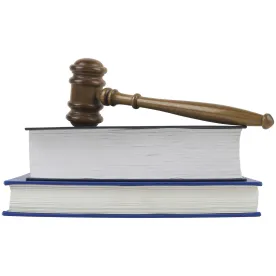On May 1, 2017, the United States Court of Appeals for the Federal Circuit issued a decision substantively addressing, for the first time, the scope of the America Invents Act (AIA) on-sale bar. In Helsinn Healthcare S.A. v. Teva Pharms. USA, Inc., Nos. 2016-1284, 2016-1787, slip op. (Fed. Cir. May 1, 2017), the Federal Circuit ruled that the details of the claimed invention need not be publicly disclosed in the terms of sale or offer documents to trigger the on-sale bar.
Helsinn involved a patent directed to intravenous formulations of palonosetron for reducing or reducing the likelihood of chemotherapy-induced nausea that the parties agreed was governed by the AIA. Helsinn, slip op. at 3, 4 n.1, 18. Over two years before the effective filing date, however, the patentee had entered into a “Supply and Purchase Agreement” with an oncology-focused pharmaceutical company that markets and distributes in the United States. Id. at 6. Pursuant to the terms of the agreement, the distribution company agreed to purchase exclusively from the patentee, and the patentee agreed to supply requirements of a product covered by the patent. Id. at 7. Although most of the material information concerning the transaction was publicly disclosed in a joint press release and 8-K filing with the Securities and Exchange Commission, the price terms and at least one of the patented features—the specifically claimed dosage—were not. Id. at 5-6, 8.
Following a bench trial, the district court held that “the AIA changed the meaning of the on-sale bar” such that a sale must now “publicly disclose the details of the invention” to trigger its application. Id. at 10. Because the claimed dosage was not publicly disclosed, the district court concluded that the AIA on-sale bar did not apply. Id. The Federal Circuit disagreed.
Before enactment of the AIA, 35 U.S.C. § 102(b) barred the patentability of an invention that was “patented or described in a printed publication in this or a foreign country or in public use or on sale in this country, more than one year prior to the date of the application for patent.” 35 U.S.C. § 102(b) (2006). Under that earlier provision, the Federal Circuit had concluded confidentiality weighs against application of the on-sale bar but is not determinative. Meds. Co. v. Hospira, Inc., 827 F.3d 1363, 1376 (Fed. Cir. 2016) (en banc). By enacting the AIA, however, Congress amended § 102 to bar the patentability of an invention that was “patented, described in a printed publication, or in public use, on sale, or otherwise available to the public before the effective filing date of the claimed invention.” 35 U.S.C. § 102(a)(1) (2016) (emphasis added).
On appeal, the patentee, the government (including the United States Patent and Trademark Office (USPTO)) and a number of amici argued that the addition of the language “otherwise available to the public” requires that a sale be accompanied by public disclosure of “the details of the claimed invention,” relying on certain floor statements made by individual members of Congress. Helsinn, slip op. at 19-22. The Federal Circuit refused to endorse such a rule, reasoning that it “would work a foundational change in the theory of the statutory on-sale bar” and finding insufficient evidence in the legislative record that “Congress intended to work such a sweeping change.” Id. at 22, 26. Instead, the Federal Circuit concluded that, “after the AIA, if the existence of the sale is public, the details of the invention need not be publicly disclosed in the terms of sale.” Id. at 27.
Significantly, the Federal Circuit in Helsinn never explicitly concluded that a secret sale would avoid the AIA on-sale bar. Rather, in light of the facts presented, which undisputedly involved a public sale, the Federal Circuit simply declined to go as far as the patentee, the USPTO, and others were advocating, which was to require that the claimed invention be publicly disclosed in addition to the transaction itself. Companies should therefore remain cautious in their approaches to pre-filing commercial activities, as the law in this area will undoubtedly continue to develop in the months to come. The safest course continues to be filing a patent application prior to an outside disclosure.






 />i
/>i
